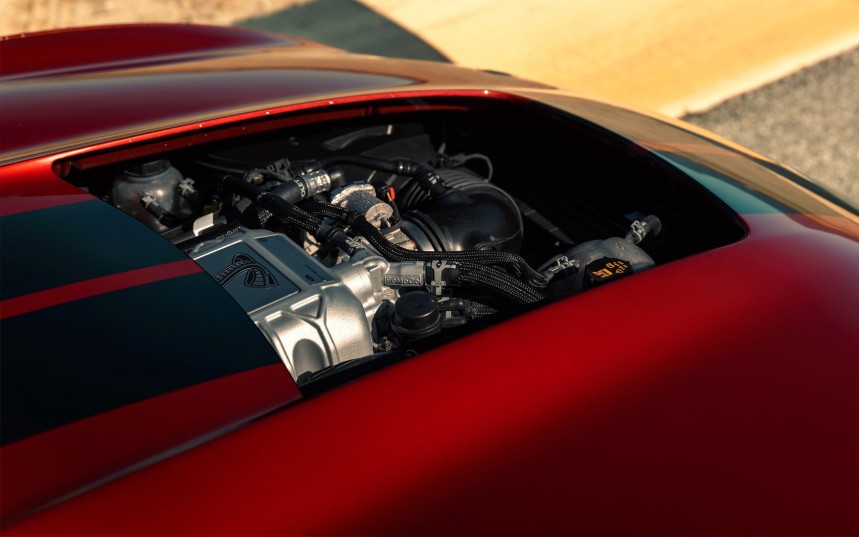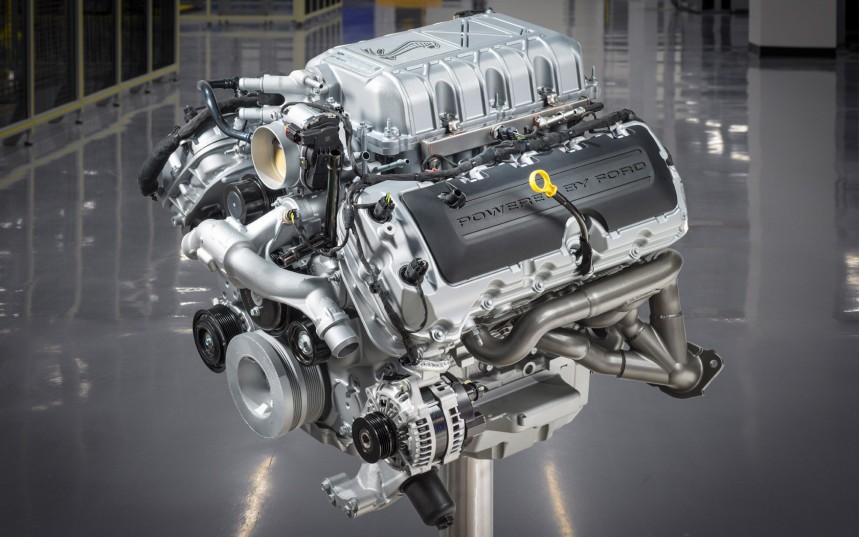For more than fifty years, Shelby Mustangs have taken the traditional power and quickness of standard Mustangs and elevated them to the top row of high-performance muscle cars, making them better in every way from generation to generation.
Carroll Shelby was the mastermind behind the transformation of Ford’s pony cars and the development of their racing program, which he led to the highest achievement in motorsport, winning the famous 24h race of Le Mans four times in a row.
Among the production cars Shelby American developed, Carroll Shelby stated that the first one he is “really proud” of is the 1967 GT500, which became the most sought-after Shelby Mustang of all time.
In recent times, GT500s are made by Ford Performance but have retained the Shelby name, which Ford revived in 2005.
The latest generation was revealed at the 2019 North American International Auto Show in Detroit and became Ford’s most powerful street-legal vehicle ever built.
At the core of this ultimate Mustang stands “the most power-and-torque dense” supercharged V8 in the automotive industry. Producing 760 hp (567 kW; 771 PS) and a mind-blowing 625 lb.-ft (847 Nm.) of torque, the 5.2-liter Predator V8 is an engine that would once again make Carroll Shelby really proud.
Developed on a redesigned version of the legendary Coyote V8 engine family, it is the result of many hours of engineering developments.
It is entirely built by the hands of one technician, whose name and signature we can find on a plaque fitted on the engine’s supercharger, under the legendary Shelby cobra logo.
The engine features a cast-aluminum wet sump oil pan, a cast-iron block with steel sleeves, forged-aluminum pistons, hollow stem intake valves, and does not utilize a flat-plane crankshaft due to the significant power boost delivered by the supercharger.
Aiding the induction system is a bar-plate style intercooler that does a better job at operating under high-heat conditions and transferring heat without losing efficiency than a conventional intercooler.
Plasma transferred wire arc cylinder liner technology enabled a .006-inch thickness of the composite coating that replaced the cast-iron cylinder liners, and helped reduce the overall engine weight by 8 lbs. (3.7 kg.)
Other innovative technologies are used, like the fail-safe engine cooling system, which is designed to protect the engine from any coolant leaks by cutting its power and keep it in running conditions until the fault can be identified and repaired.
The Predator also features an intelligent oil quality monitoring system that will calculate oil service intervals dynamically, based on how the GT500 is being used.
Another highlight is the smart changing alternator that controls the voltage of the charging system based on traveling speed and increases engine efficiency.
Using this marvelous engine, the Shelby GT500 can run from 0-62 mph (0-100 kph) in a supercar worthy 3.3 seconds and it is more than capable of taming the most difficult racetracks.
Since it invested so much time and resources for the development of this engine, it is fair to assume that Ford will not make the Predator a Shelby-exclusive engine. Reports surfaced that the next generation of the carmaker’s flagship pickup truck, the F-150, will probably utilize the Predator on the Raptor just like the Ram 1500 TRX makes great use of the Hemi Hellcat.
Among the production cars Shelby American developed, Carroll Shelby stated that the first one he is “really proud” of is the 1967 GT500, which became the most sought-after Shelby Mustang of all time.
In recent times, GT500s are made by Ford Performance but have retained the Shelby name, which Ford revived in 2005.
The latest generation was revealed at the 2019 North American International Auto Show in Detroit and became Ford’s most powerful street-legal vehicle ever built.
Developed on a redesigned version of the legendary Coyote V8 engine family, it is the result of many hours of engineering developments.
It is entirely built by the hands of one technician, whose name and signature we can find on a plaque fitted on the engine’s supercharger, under the legendary Shelby cobra logo.
The engine features a cast-aluminum wet sump oil pan, a cast-iron block with steel sleeves, forged-aluminum pistons, hollow stem intake valves, and does not utilize a flat-plane crankshaft due to the significant power boost delivered by the supercharger.
Plasma transferred wire arc cylinder liner technology enabled a .006-inch thickness of the composite coating that replaced the cast-iron cylinder liners, and helped reduce the overall engine weight by 8 lbs. (3.7 kg.)
Other innovative technologies are used, like the fail-safe engine cooling system, which is designed to protect the engine from any coolant leaks by cutting its power and keep it in running conditions until the fault can be identified and repaired.
Another highlight is the smart changing alternator that controls the voltage of the charging system based on traveling speed and increases engine efficiency.
Using this marvelous engine, the Shelby GT500 can run from 0-62 mph (0-100 kph) in a supercar worthy 3.3 seconds and it is more than capable of taming the most difficult racetracks.
Since it invested so much time and resources for the development of this engine, it is fair to assume that Ford will not make the Predator a Shelby-exclusive engine. Reports surfaced that the next generation of the carmaker’s flagship pickup truck, the F-150, will probably utilize the Predator on the Raptor just like the Ram 1500 TRX makes great use of the Hemi Hellcat.










